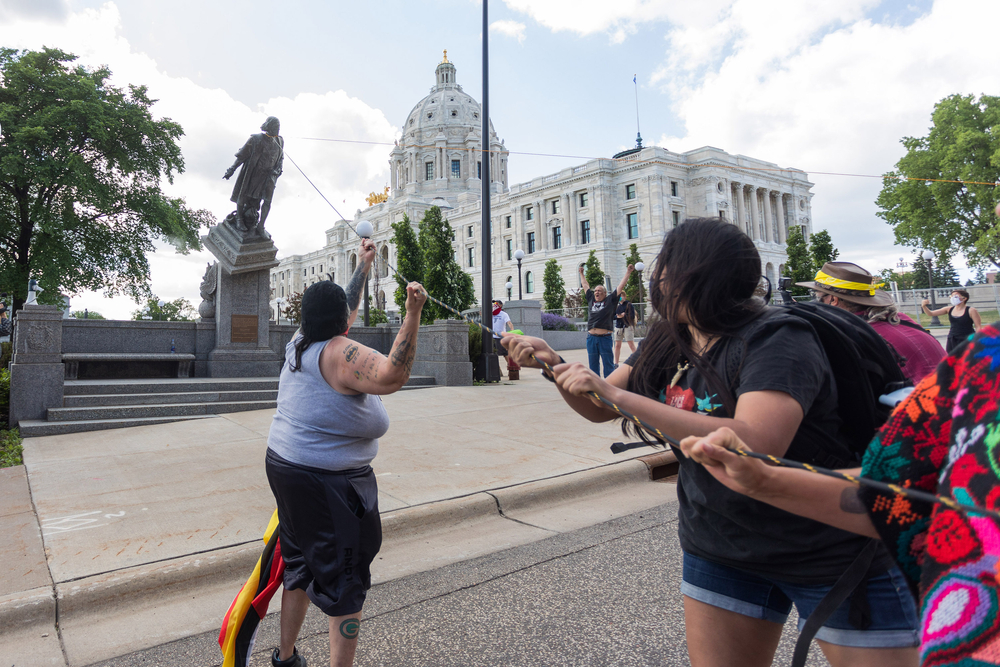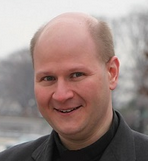Our open national strife entered a new phase when a leader of Black Lives Matter suggested his members move from cultural iconoclasm to religious iconoclasm. Shaun King’s call to smash all European-looking images of Jesus – echoing an ancient heresy – perfectly illustrates the underlying beliefs and ideologies motivating present-day anarchists.
On June 22, King – a surrogate for democratic socialist Bernie Sanders’ campaign – tweeted that “the statues of the white European they claim is Jesus should also come down. They are a form of white supremacy. Always have been. … Tear them down.”
Yes, I think the statues of the white European they claim is Jesus should also come down.
They are a form of white supremacy.
Always have been.
In the Bible, when the family of Jesus wanted to hide, and blend in, guess where they went?
EGYPT!
Not Denmark.
Tear them down.
— Shaun King (@shaunking) June 22, 2020
King’s call to destroy all images of Christ which he deems insufficiently brown-skinned would affect every Roman Catholic and Eastern Orthodox Church that follows traditional patterns of iconography, as well as many Protestant communities. The incitement to shatter images of Jesus holds a particular relevance for me as an Eastern Orthodox Christian. A similar controversy, the iconoclast heresy, embroiled the Christian Church the 8th and 9th centuries.
The Church traditionally believed that Christ could, and should, be depicted in artwork. The Orthodox party’s foremost theologian, St. John of Damascus (676-749), wrote – in terms that are startlingly relevant to the modern controversy – that it is possible to depict “the incarnate God, Who appeared on earth in the flesh and Who, in His ineffable goodness, lived with human beings and assumed the nature, quantity, shape, and color of flesh.” These images, known as icons, taught the faith to the illiterate and embody the presence of Christ. As one historian wrote, “The role of the image ceased to be purely didactic and was in the process of becoming sacramental.”
The heretics, known as iconoclasts, believed that depicting Jesus Christ in images was idolatry that warranted decimation. Sometimes the destruction came from without, as when the Muslim Caliph Yazid II ordered all icons (and other images of human beings) destroyed in Syria in 722 A.D. More often, the strife arose from within. Byzantine Emperor Leo III (who reigned 717-740) smashed an icon of Christ that hung above the imperial palace and mutilated those who tried to prevent the desecration of public property. His successor, Emperor Constantine V (741-775), attempted to impose his own doctrine on the Church and ruthlessly persecuted monks who defended the use of icons.
First, he destroyed all icons in churches. Then he outlawed traditional parts of the Church’s prayer life. Later, he commended a ruler of Ephesus who escalated the attack by confiscating monastic property and having monks’ nostrils slit.
The enduring relevance is not merely that both ancient heretics and modern socialists wish to destroy images of Christ, disregard private property, and insist that “religious beliefs” they disfavor “have to be changed.” The similarity also lies in ancient and modern heretics’ embrace of dualism and opposition to reality in the concrete, so to speak.
The iconoclasts explained that their opposition to Christ contained a nucleus of disregard for all the material creation. At a robber council in 754, bishops loyal to the emperor accused the Orthodox party of reviving “heathenism” in their ranks. They concluded, “It is not permitted to Christians, who have the hope of the resurrection, to imitate the customs of demon-worshippers and to insult the saints, who shine in so great glory, by common dead matter.”
The Catholic-Orthodox party (known as iconodules) held that, because of the hypostatic union of Christ’s human and divine nature into one Person, any image of Christ is an image of the theanthropic Word-made-flesh. St. John of Damascus refuted charges of idolatry by calling on the difference between worship (latreia), which is due to God alone, and veneration (dulia), which honors anything that is venerable:
I do not worship matter, I worship the God of matter, Who became matter for my sake, and deigned to inhabit matter, Who worked out my salvation through matter. I will not cease from honouring that matter which works my salvation. I venerate it, though not as God.
He went one step further. Because of the Incarnation, Orthodox Christians venerated not merely religious images or sacramentals but all creation. He wrote:
I honour all matter besides, and venerate it. Through it, filled, as it were, with a divine power and grace, my salvation has come to me. Was not the thrice happy and thrice blessed wood of the Cross matter? Was not the sacred and holy mountain of Calvary matter? What of the life-giving rock, the Holy Sepulchre, the source of our resurrection: Was it not matter? Is not the most holy book of the Gospels matter? Is not the blessed table matter which gives us the Bread of Life? Are not the gold and silver matter, out of which crosses and altar-plate and chalices are made? And before all these things, is not the Body and Blood of our Lord matter? … Do not despise matter, for it is not despicable. Nothing is that which God has made. This is the Manichean heresy. That alone is despicable which does not come from God, but is our own invention, the spontaneous choice of will to disregard the natural law — that is to say, sin. (Emphasis added.)
The Seventh Ecumenical Council in 787 A.D. came down on the side of the iconodules. In time, churches restored and made use of images as a means of worshiping the one true God. Following this line of thinking, true Christians see all matter as “very good” and all non-sinful professions as vocations that allow an individual to work out his or her salvation. Yet despite the ecumenical council’s decree, the opposing spirit has not disappeared.
A political and historical Manicheanism lies at the heart of the present BLM-inspired, statue-toppling zeitgeist. The Manichean cosmology held that the world emerged from a long battle between two opposing forces: spirit, which is holy, and matter, which is evil. Salvation cannot be worked out through matter but only by eventually eradicating it. Today’s protesters feel the same way about American history.
Until this moment, history recognized every person as a complicated amalgamation of good and evil, placed him within the circumstances of his own time, and judged him based on whether the world was better before or after his life. Today’s mobs set their faces like stone against the granite visage of anyone who expressed less-than-absolute conformity to their utopian vision. They see no more in statues of Washington, Lincoln, Churchill, and Gandhi than feet of clay.
The heroes of U.S. and biblical history have been reduced to nothing more than slave owners or apologists. There are no “sacred values in our Judaeo Christian heritage,” and only a benighted soul would daydream about “bringing our nation back to those great wells of democracy which were dug deep by the founding fathers in their formulation of the Constitution and the Declaration of Independence,” in the formulation of Martin Luther King Jr.
In this ideological fervor, there is only us and them. Those who do not kneel in humiliation dwell in undifferentiated darkness. Pure good and pure evil face off in the guise of supporting “progress” or being on “the wrong side of history.”
It has not yet dawned on the modern iconoclasts that they will never incarnate their new religious faith – socialism – because it ignores the reality of human anthropology. It proposes ethics diametrically opposed to the morality which makes liberty possible. Its merciless contempt is an invitation to perpetual conflict, not the path to progress. Strength for that journey comes only by drinking deeply from the nourishing wells that our forefathers dug.
(Photo credit: Shutterstock.)

